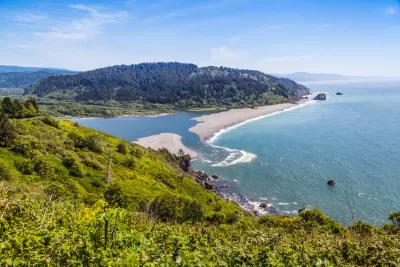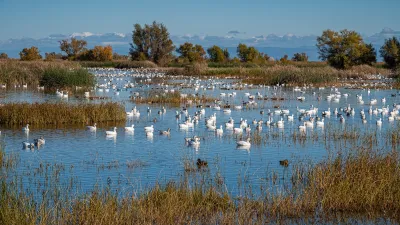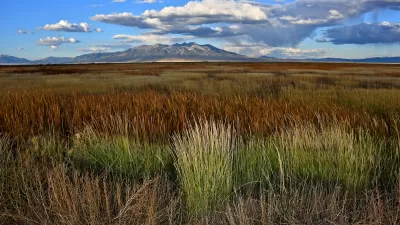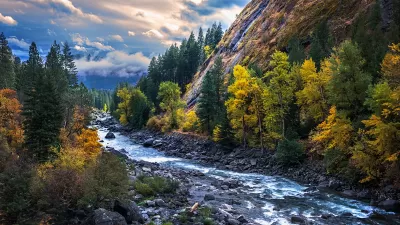In a reversal from Trump-era policy, the Biden administration wants to reinstate protections that prevent the contamination of streams and waterways.

After President Trump rolled back protections for streams and wetlands, "the Biden administration is wading into a decades-long battle over how far federal officials can go to stop contaminants from entering small streams and other wetlands" by calling for "a new set of protections for waterways that provide habitats for wildlife and safe drinking water for millions of Americans," reports Dino Grandoni for the Washington Post.
"At the center of the decades-long legal storm over water protections is the Clean Water Act, which bans pollution in 'waters of the United States' without a permit." The debate over "what constitutes such water" continues as the composition of the Supreme Court changes. "In 2015, the Obama administration expanded federal authority to stop or curtail development that could harm a variety of wetlands, streams and ditches that feed into larger bodies of water protected under the Clean Water Act." After President Trump took office, those controls were rolled back.
In what Grandoni calls a "staggering loss," "more than half of the 221 million acres of wetlands in what would become the contiguous United States have been drained, often for farming" since the 1780s. "With the announcement Wednesday, the Biden administration is kicking off a lengthy rulemaking process. It must first strike down the Trump rule before establishing its own definition for which waterways get federal protection."
FULL STORY: Biden pushes protection for more streams and wetlands, targeting a major Trump rollback

Study: Maui’s Plan to Convert Vacation Rentals to Long-Term Housing Could Cause Nearly $1 Billion Economic Loss
The plan would reduce visitor accommodation by 25,% resulting in 1,900 jobs lost.

North Texas Transit Leaders Tout Benefits of TOD for Growing Region
At a summit focused on transit-oriented development, policymakers discussed how North Texas’ expanded light rail system can serve as a tool for economic growth.

Why Should We Subsidize Public Transportation?
Many public transit agencies face financial stress due to rising costs, declining fare revenue, and declining subsidies. Transit advocates must provide a strong business case for increasing public transit funding.

How Community Science Connects People, Parks, and Biodiversity
Community science engages people of all backgrounds in documenting local biodiversity, strengthening connections to nature, and contributing to global efforts like the City Nature Challenge to build a more inclusive and resilient future.

Alabama: Trump Terminates Settlements for Black Communities Harmed By Raw Sewage
Trump deemed the landmark civil rights agreement “illegal DEI and environmental justice policy.”

Dear Tesla Driver: “It’s not You, It’s Him.”
Amidst a booming bumper sticker industry, one writer offers solace to those asking, “Does this car make me look fascist?”
Urban Design for Planners 1: Software Tools
This six-course series explores essential urban design concepts using open source software and equips planners with the tools they need to participate fully in the urban design process.
Planning for Universal Design
Learn the tools for implementing Universal Design in planning regulations.
City of Santa Clarita
Ascent Environmental
Institute for Housing and Urban Development Studies (IHS)
City of Grandview
Harvard GSD Executive Education
Toledo-Lucas County Plan Commissions
Salt Lake City
NYU Wagner Graduate School of Public Service





























